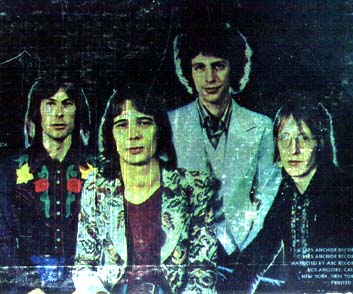Looks like Batman waited in that $8 line more than once.
Towsman Rick sends in the following report from the recent Newport Folk Festival.
I spent the weekend at the Newport Folk Festival, where they sold beer and wine for the first time. They and the town were nervous, of course, about the potential problems, so they made a beer area way at the end of a pier (the festival is at a Revolutionary War fort on the water). And they charged $6 to $8 for lousy beer.
And people thronged to it. The second they opened the gate, the wait was 20 minutes. By mid-afternoon (the festival went until 7:00 pm; beer closed at 6:00 pm) the wait was about an hour. And people were doing it!
We’ve spoken of beer before, but I don’t recall us actually discussing the appeal. Because I don’t get it at all.
I’m not a big drinker; that might be one thing. But while I drink the occasional beer, neither I or anyone I know would ever wait in line for an hour to pay $8 for a beer in a bar. Does anyone have any idea what it is about being out hearing music that suddenly makes it worth it for so many people?
(It’s even more baffling at sheds: At least at this festival you could still hear one of the three stages; why anyone who has paid $75 to hear one band volunteers to miss 2 to 3 songs for the privilege of paying $8 for a beer is even more alien to me.)
The Eagles are putting the finishing touches on an album’s worth of all-new material. They promise to tour extensively in 2008 in support of this album. Their smug mugs and highlighted, remaining wisps of hair will never fade away. Joe Walsh claims that the new material will “go in some really, really new, different directions. It’s hard to compare to anything that I hear out there now.”
Bring on the Psychic Oblivion!
In related news:
Van Halen, Roth to announce tour next week
New Jimmy Buffett Song ‘Cold Weather and Personal Responsibility’ Disappoints Long-Time Fans
Yesterday I was flipping back and forth between a particularly bad start to a Phillies game (which ended in stunningly successful fashion) and an episode of Austim City Limits, featuring The Polyphonic Spree. My son was as fascinated as I was by the ridiculous be-robed gesticulations of these clowns, yet he couldn’t quite grasp the majesty of their schtick. “This is like opera!” he kept saying. Good boy. Some Hispanic rock band followed that also was heavy on multi-instrumental band members and was led by a singer with a screeching voice. “Does every band on this show have to have a stupid singer?” my son asked.
Rock ‘n roll is rife with highly successful schticks, from Freddy and the Dreamers to Sha Na Na to The Residents to The White Stripes. More power to all these practitioners of rock schtick, I say. But how about the great schticks of rock that pretty much went nowhere? How about Nash the Slash? I’m sure you’ve got a favorite rock schtick that went nowhere.
I look forward to your responses.
In the past, we’ve covered one of Rock’s Doomed Fashion Trends, the Headband. Today, I’d like to take a look at one of Rock’s Resiliant Fashion Trends.
Check out the following video, in which Toni Childs’ duets with a famous soul man and a star-studded supporting cast.
Despite the overall fine performance alongside the legendary Al Green, despite Carlos Santana‘s flaming red suit, despite the star-studded, mulleted backup singers, the real star of this clip is Toni Childs’ Look, which I’m calling the Suburban Guerrilla Look.
Continue reading »


I think I struck a nerve in a Townsman the other day when I referred to “mediocre” Costello songs that were made by Attractions bassist Bruce Thomas. He wanted to know what songs I had in mind. Leaving out Brutal Youth, an album on which even Pete Thomas starts to sound limp and on which Nick Lowe actually plays some bass (and I don’t want a Pince Nez pulled on me if I incorrectly give Bruce credit), as well as a fantastic, nearly non-song like “Lipstick Vogue”, which is made equally by both Thomases in the Attractions’ rhythm section – in no particular order – here are 10 mediocre Costello songs that were made interesting almost solely by the bass playing of Bruce Thomas.
Continue reading »

